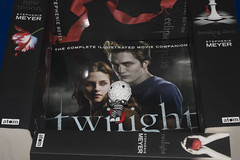Magazines geared towards teens are some of the best examples of illustrating gender norms for students new to Sociology. We recommend this activity for an Intro to Sociology class or to begin a course on the Sociology of Gender:
Have students read “Selling Feminism, Consuming Femininity” by Amanda M. Gengler in the Spring 2011 issue of Contexts. Then, have them look through magazines aimed at young women or men (print or online) with a new eye for spotting the underlying messages about femininity and masculinity contained in the images or articles.
Send them home with a worksheet with these questions repeated 4-6 times so they can answer them about each image/article they find:
1. What message does this image/article portray about femininity or masculinity?
2. Do you believe this message has the potential to be harmful to young men or women? If so, in what ways? If not, why not?
3. Imagine you are talking to your younger brother/sister/cousin/daughter/son about this image or article, what would you say?
Have them bring their examples into class and form small groups for a “Gender Workshop” (this could definitely work in a large class!) They’ll take turns describing their finds to the other members of the group. After they’ve all had their turn, they’ll have a guided discussion about their experience, addressing these questions in a small group discussion:
1. What was this experience like for you? Was there anything surprising about looking at these magazines in this way?
2. Do you believe that absorbing gender norms like the ones discussed today could have negative consequences for young men and women? If so, how?
Give examples:3. Whose responsibility is it to manage such messages about gender norms? The publishers of the magazines? The authors of the articles? The advertisers? The parents of the teens? The teens themselves?







 This article and short film would would fit well in many types of courses: on the family, marriage, sexuality, poverty, or drug use.
This article and short film would would fit well in many types of courses: on the family, marriage, sexuality, poverty, or drug use.
